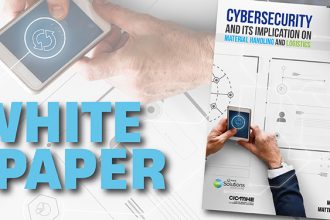Big Data Analytics And Its Value Across Supply Chain Operations

When successfully harnessed and leveraged, Big Data can give organizations insights into their business operations that enable better decision-making and add value across throughout supply chains, according to a white paper written by Oklahoma State University School of Industrial Engineering and Management graduate student Ishita Gupta and Dr. Manjunath Kamath, professor. The pair researched “Adding Value to Manufacturing, Retail, Supply Chain, and Logistics Operations with Big Data Analytics” through a grant funded by MHI’s Solutions Community and the College Industry Council on Material Handling Education (CICMHE).
In the paper, the researchers note that the challenges of utilizing Big Data include the sheer volume of information generated daily across multiple forms (structured, semi-structured, and unstructured) and from numerous sources (transactional systems, log files, GPS devices, smartphones, RFID readers, surveillance cameras, sensor networks, Internet of Things, social media, and more). Not only must the data be stored, but its trustworthiness must also be assessed.
To help supply chain managers gain a better understanding of Big Data, the paper explores different potential sources, storage options, and analysis techniques, including:
- Descriptive Analytics, which summarizes the data and converts it into useful information. This technique is used by 90% of today’s organizations, according to Gupta and Kamath. It is often applied to historical data, providing insight into past behaviors that can shed light on factors that might impact the company’s future.
- Predictive Analytics, which offers a view of future outcomes by utilizing more sophisticated analysis techniques, as well as statistical predictions and machine learning. Particularly valuable in forecasting, it is used to detect clusters, tendencies, and exceptions. It can help a company set realistic goals and expectations, as well as plan more effectively.
- Prescriptive Analytics, a sophisticated technique that considers multiple sets of options and then makes a recommendation about a best possible solution for a given scenario. It helps a company better understand what potential occurrences may happen, as well as develop appropriate responses to such situations.
Additionally, the researchers present several use cases for Big Data analytics applications across manufacturing, retail, supply chain, and transportation/logistics. These examples illustrate the value of Big Data, including the ability to make better decisions, optimize the use of resources, improve process quality, and enhance operational performance. Among the companies highlighted are:
- Raytheon, which used Big Data to gain greater insight into their suppliers’ financial stability, performance, and availability. The company also leveraged Big Data to speed product development and reduce time to market by better aligning engineers, suppliers, and customers.
- Lennox International, which applied Big Data analytics to an integrated forecasting system that more accurately predicted customer needs in order to deliver better service through automated planning.
- Walmart, which improved its inventory management processes through Big Data streaming analytics, real-time data delivery, and frequent updates for more accurate analysis of store performance.
- Levi Strauss & Co., which used the Internet of Things and predictive analytics of Big Data to more accurately track items in-store using RFID tags. This helped to maintain inventory location accuracy and avoid lost sales.
- Amazon, which leveraged Big Data in three separate areas: pre-packing of outbound items prior to receiving customer orders; flexible automation through robotics that transport items from storage to forward picking; and drone-based delivery to locations within 30 minutes of the warehouse.
- Logivations, which applied Big Data analytics to improve storage efficiency and picking productivity by analyzing and simulating alternative layouts in an existing warehouse. The company also optimized picking accuracy, inventory turns, and warehouse productivity with camera-guided autonomous vehicles bearing sensors that captured shelf weight and weight on forklift in real time.
- UPS, which optimized 55,000 North American delivery routes to save $400 million per year via Big Data analytics. The process also allowed the carrier to cut emissions as well as costs by automatically selecting the best transportation mode per shipment.
- DHL, which used Big Data to optimize initial route planning based on incoming shipment information, reducing mileage, costs, and emissions. The carrier also applied Big Data analytics to efficiently re-route shipments to avoid disruptions, and to improve delivery accuracy in areas where address information is poor or limited.
Want to learn more about how Big Data analytics can bring value to your operations? The white paper is available as a free download, here.



